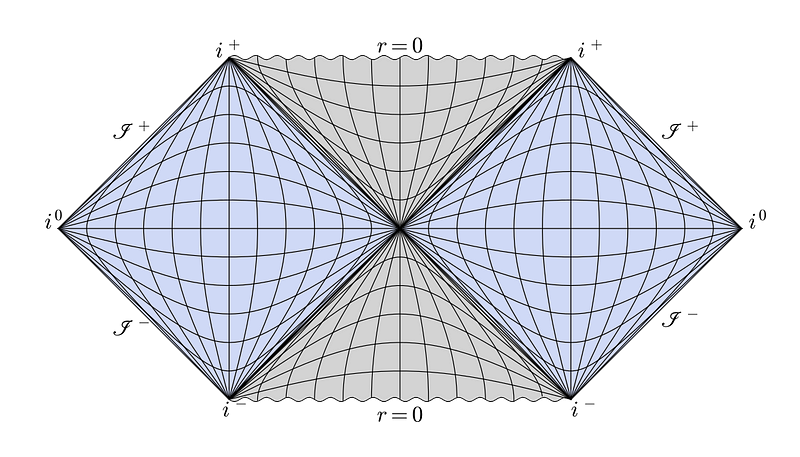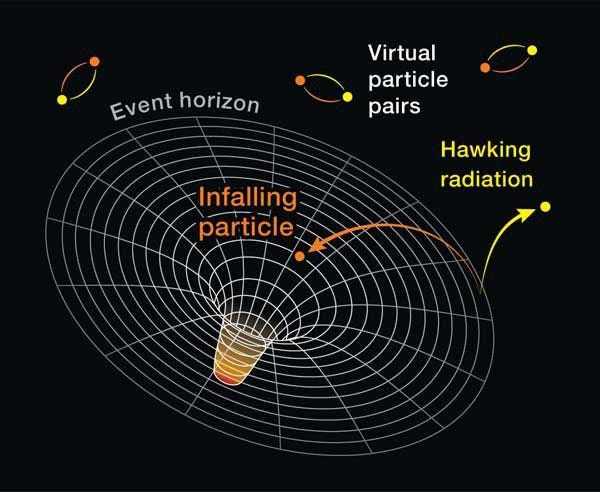Exploring the Mysteries of Black Holes and Their Significance
Written on
Chapter 1: The Enigmatic Nature of Black Holes
Black holes are fascinating cosmic phenomena that may hold the key to a comprehensive theory of quantum gravity, which seeks to explain the fundamental workings of our universe, including the nature of space and time. These celestial bodies feature a significant boundary known as the “event horizon,” which allows us to explore the surrounding events through the lens of physics.
However, a major conflict exists between our foundational theories of nature: general relativity and quantum mechanics. The quest for a unified framework, often referred to as the "quantum theory of gravity," represents the pinnacle of aspiration in physics, striving to harmonize these two essential pillars.
In this light, black holes can be seen as crucial to unlocking deeper insights into the very fabric of space and time.
The Origins of Black Hole Theories
The exploration of black holes dates back to the late 18th century, around the 1780s-1790s. Two prominent thinkers of the time, John Michell and Pierre-Simon Laplace, independently proposed the idea of escape velocity — the speed required to break free from an object's gravitational pull.
For instance, the escape velocity from Earth is about 8 miles per second, while for the Sun, it is around 400 miles per second due to its greater mass. Laplace concluded that a star with Earth-like density but significantly larger in size would be invisible, coining the term "Dark Star." Over time, this idea was largely set aside.
Michell and Laplace's intriguing hypothesis led to the question: what if there existed even larger stars? If these massive stars had gravity so intense that their escape velocity exceeded the speed of light, they would remain undetectable.
To comprehend the challenges black holes present, let’s visualize their structure. From an external viewpoint, the only observable aspect is the event horizon, marking the boundary between the universe and the black hole's interior. Crossing this threshold, even at light speed, would not free one from the black hole's gravitational grasp.
Moreover, the event horizon has perplexed scientists for decades, representing a region where time appears to freeze, as suggested by Einstein’s theory of relativity. However, a lingering mystery persists regarding the center of a black hole, often envisioned as a singularity — a point of infinite density resulting from a collapsing massive star.
Interestingly, discussing the center may be misleading. A Penrose diagram, named after Roger Penrose, illustrates that space and time become so distorted near a black hole that they essentially swap roles. Therefore, the singularity isn't a spatial location but rather signifies the end of time itself, a phenomenon we still struggle to fully understand.

Quantum Fluctuations at the Event Horizon
A pivotal advancement in black hole research emerged from Stephen Hawking's groundbreaking 1974 paper, which introduced the concept of Hawking radiation. This phenomenon suggests that black holes, influenced by quantum mechanics, can emit particles and possess a measurable temperature.
Focusing on the area around the event horizon, one can observe a dynamic exchange of entangled particle pairs constantly appearing and vanishing. Occasionally, one of these particles escapes the black hole, resulting in energy loss for the black hole itself, which may eventually lead to its extinction.

This revelation carries profound implications: black holes are not eternal; they have a limited lifespan. Ultimately, all matter that enters a black hole could be released back into the universe. This raises a crucial question: “What happens to the material that falls in?” According to Einstein’s theory, it reaches a singularity — an enigma we have yet to define. Eventually, the black hole may vanish entirely, leaving only Hawking radiation in its wake.
This inquiry leads to the possibility that the information about everything that has entered a black hole might be encoded in the emitted radiation over time. This question is significant because, according to our current understanding of physics, “information is conserved” in the universe.
The challenge arises when merging black holes with quantum mechanics and general relativity, suggesting that these entities might erase information, leading to the well-known black hole information paradox.
Recent research suggests that black holes do not erase information. A number of scientists are exploring the idea that all emitted radiation could be collected and potentially used to reconstruct information about everything that has passed through a black hole. This concept hints at a deeper theory of gravity, where space and time might not be fundamental but rather emergent properties arising from more fundamental components, possibly linked to quantum entanglement.
As we ponder the origins of the universe and whether it has a temporal starting point, it is essential to contemplate the nature of space and time. The confirmation of black holes compels us to question the very essence of these concepts.
Einstein once stated, “Look deep into nature, and then you will understand everything better.” While the future remains uncertain, it beckons us to delve into the profound mysteries that lie ahead.
Thank you for joining this exploration. If you have any thoughts or feedback, feel free to share. Until next time, may your journey be filled with success and joy.
The first video titled "What Black Holes Reveal About Gravity's Strangest Properties" delves into the intriguing connections between black holes and the fundamental nature of gravity, offering insights into their role in our understanding of the universe.
The second video, "Black Holes: Why They Matter," discusses the significance of black holes in the broader context of cosmic exploration and their implications for our understanding of physics.